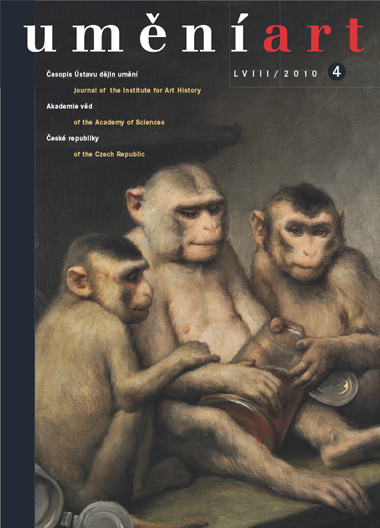Aleš Filip - Roman Musil
Ein wahrer Homunkulus in der Tierwelt. Gabriel von Max´ Affenbilder
The Czech-born, Munich-based artist Gabriel von Max (1840-1915) was called the 'monkey painter' (Affenmaler) by the contemporary press. The so-called monkey genre was an important part of his vast body of work. A collection of these paintings was presented in 2009 at an exhibition called Darwin - Kunst und die Suche nach den Ursprüngen at Schirn Kunsthalle in Frankfurt. However, in the exhibition catalogue attention is focused solely on Max's 'scientific collection', not his paintings. This article combines several levels of interpretation. Drawing on written memoirs it outlines the artist's biography, which reveals how Max, who kept monkeys himself, had a growing affinity with primates. Max's unique position in the art scene stems from the fact that he was both a painter and an amateur naturalist, so the article also examines how his orientation in the natural sciences manifested itself in his art work. Attention is also focused on the reception to his monkey paintings, their connection to other themes in Max's work, and a comparison with works by other artists (e.g. Alexandre-Gabriel Decamps, Paul Meyerheim, František Kupka). Unlike his predecessors and contemporaries who leaned towards traditional depictions of primates as representative of morality (like in fables), Gabriel von Max painted them less as a genre and more as portraits, so that the paintings could be likened to human portraits. His paintings of monkeys have a semantic complexity. They can be 'read' as caricatures, ironic, evolutionist, realistic documentation, fantasy - and all of that at the same time. By associating animal physiognomy with human types, Max broke with the scientific interpretation of zoological observation. He took monkeys beyond the notional boundary that divides the world of humans from that of animals, and in doing so created a manipulative illusion. This illusion is reinforced by his precise pictorial naturalism and frequent use of trompe l´oeil. So it is not people or primates that his paintings portray but rather a new species, the 'real homunculus', which, as he described in his manuscript Meine Affen, was also the direction of his interest in the monkeys he raised himself.
Full-text in the Digital Library of the Czech Academy of Sciences:
https://kramerius.lib.cas.cz/uuid/uuid:de038f2b-ae8a-e7d9-b90d-e3a144d732f1
< back

